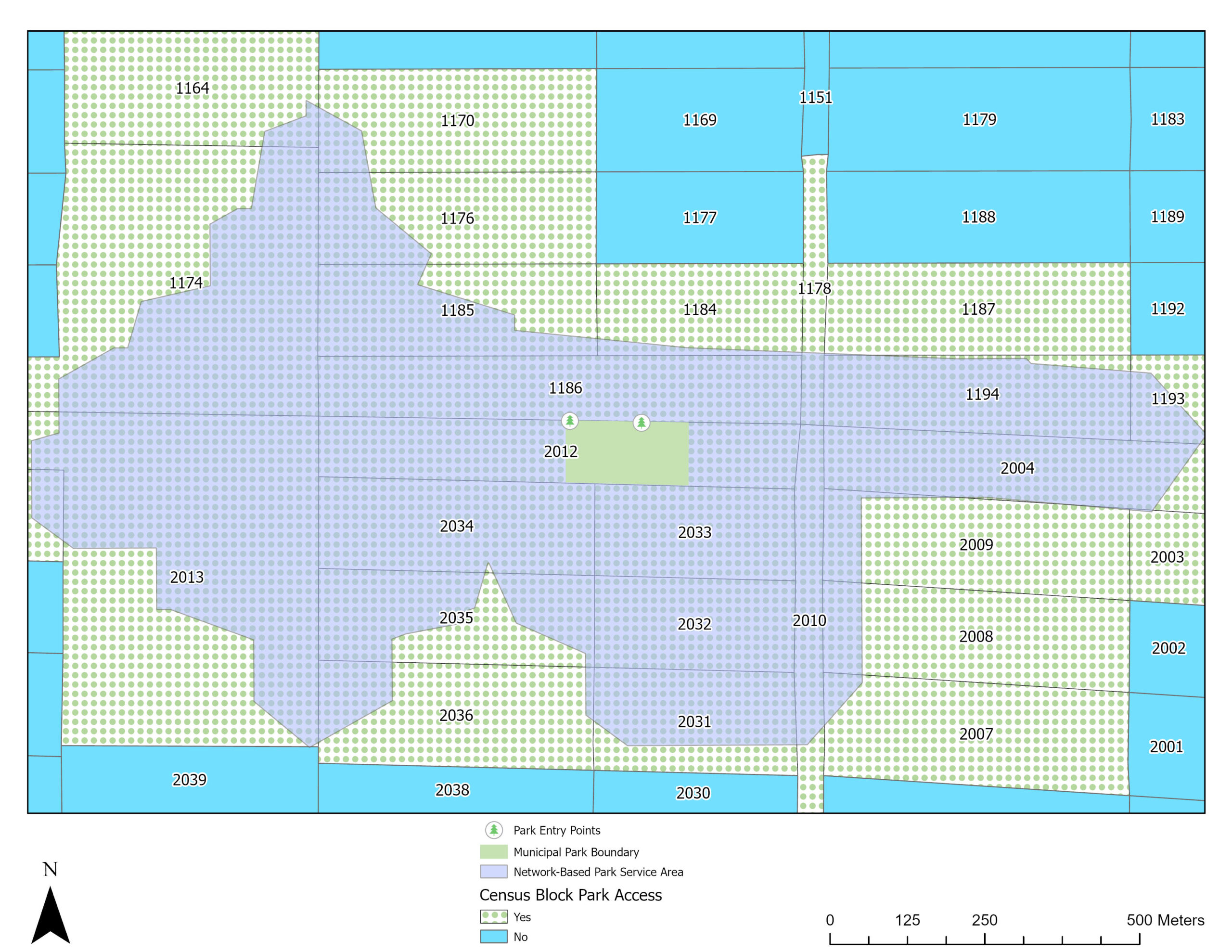Green spaces are a virtue to their surroundings; they improve air quality, reduce extreme temperatures and can mitigate hazards, like flooding. Just living near a park is beneficial; nearby residents tend to have lower health care bills, reduced stress and depression levels and lead more active lifestyles.
Not all residents have access to such benefits, however. A new study led by the University of Utah found that public parks are unevenly distributed in nearly every community in the United States.
"If your city has a Chinatown or Little Italy or any ethnic enclave, chances are that the area doesn't have walkable access to a greenspace," said Marco Allain, a lecturer at the U and lead author of the study.
In addition to analyzing which Americans' live walking-distance to parks across major race and ethnicity categories, the study is the first to assess different access within those groups based on national and Tribal origin. The findings revealed previously unseen national patterns of unequal access to greenspaces.
"It's the city or town that decides where public parks should go," Allain said. "We hope that our analysis can be a tool for planners to make sure all people can benefit from a local greenspace."
The study will appear in the November issue of the journal Urban Forestry & Urban Greening.
The researchers used restricted-access data housed in the Wasatch Front Research Data Center (WFRDC), one of only 37 centers in the U.S. Census Bureau's national network of Federal Statistical Research Data Centers (RDCs). RDC datasets are the gold standard for research on contemporary America due to their extreme detail. The data have individual-level information gleaned from federal censuses, surveys of business and households, linked employer-employee data and records from states and federal agencies and other sources.
The Census Bureau implements stringent security protocols due to the sensitivity of personal information in the datasets. Researchers must submit to fingerprinting and background checks and can only interact with the raw data in person, inside the WRFDC facility located on the U's campus.
"This project wouldn't have been possible without access to the RDC data," said Tim Collins, professor in the U's School of Environment, Society & Sustainability and co-author of the study. The Census Bureau alters their public datasets by lumping together survey responses into larger area units to avoid identifying individuals, Collins continued.
"Honestly for populations with less common ancestries, the counts are so small that they get lost in the public datasets," he said.

The authors identified residential zones that were accessible within a 10-minute walk (half mile) in more than 11 million census blocks-roughly two city blocks-in the contiguous 48 U.S. states and the District of Columbia. They established these park service areas using walkable paths from park entrances via sidewalks, bridges and other conditions that enable real-world pedestrian travel. Then, they used the restricted microdata for nearly 25 million Americans to see who lived within a 10-minute walk to the park.
The study captured some surprising patterns that hadn't been documented nationally.
Park access disparities
Along with White Americans, Native Americans had the highest park area per capita of any group, likely due the populations living on reservations in proximity to large tracts of public lands. The authors plan to investigate whether the pattern holds for Native Americans living in urban areas.
While previous studies have found that Black and Hispanic populations have reduced access to park space relative to White Americans, this study is the first to find that Asian Americans have substantially lower access to park space nationwide. Pacific Islanders had similar access to park space to the White populations, perhaps because most Pacific Islanders live in the western U.S., a region with larger green spaces.
Black populations had the poorest park access of all groups across the U.S. Census race categories. When broken down by national origin, people with ancestors from the Dominican Republic and Nigeria had particularly low access. Residents of Dominican and Nigerian descent tend to be concentrated in urban areas, such as Houston, Atlanta and New York City, that have lower park space overall.
The U.S. Census Bureau aggregates people of Middle Eastern origin into the White race category. This analysis found that Middle Eastern/Arab subgroups had access to much less park space compared to people of English ancestry. Additionally, people with Polish ancestry also had considerably less access than people of English ancestry.
"These groups have historically experienced marginalization, and that may have influenced their access to environmental amenities today," Collins said.
Parks for all
The study concludes that the U.S. should build more green spaces to ensure that all Americans reap the mental, physical and financial benefits of living near a greenspace. However, traditional funding models rely on meager sales and property taxes to fund local park departments. City planners should shift from the implementing single park projects toward an approach that centers policy and systems change, the authors assert.
Alessandro Rigolon, co-author and associate professor in the Department of City and Metropolitan Planning, noted that promising work has emerged recently.
"Cities and states around the country have developed policy tools to address these disparities at scale. For example, bonds that dedicate funding to underserved communities, or developer fees that can be used in park-poor areas. These initiatives show that there's an increasing understanding that park inequities should be addressed holistically rather than building one park at a time."






